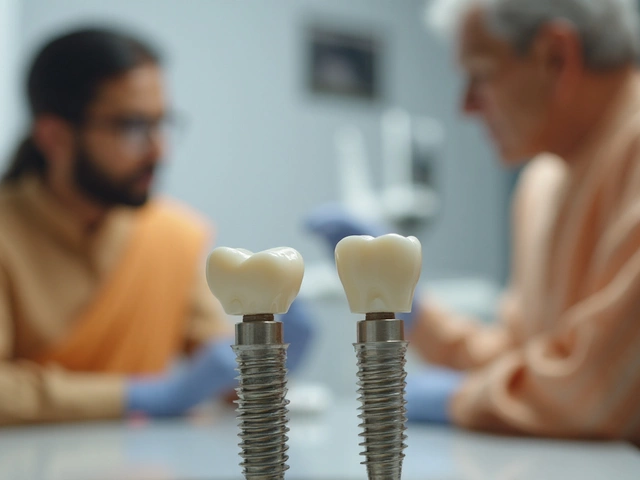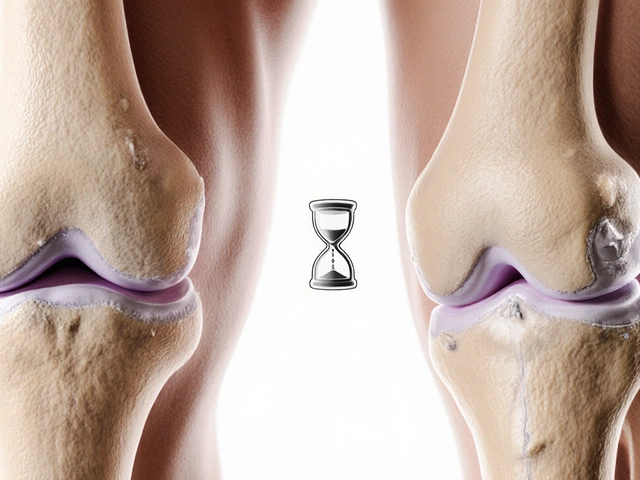Breaking a bone not only disrupts daily life but also brings intense pain. While some fractures are more notorious for their agony, such as femur or rib breaks, the severity can also depend on the person and circumstances. Factors such as nerve density, the bone's role in movement, and surrounding tissues contribute to the pain intensity. Exploring the various types of common fractures helps in comprehending which are among the most painful and why.
Read MoreSevere Fractures – Quick Guide to Treatment, Pain Relief & Recovery
Breaking a bone badly is scary, but knowing what to do can make the whole process smoother. In this guide we cover the basics – how to spot a severe fracture, what steps to take right away, treatment choices, pain control and the rehab you’ll need to get back on your feet.
Spotting a Severe Fracture and First‑Aid Steps
A severe fracture usually means the bone is broken into several pieces, the break goes through the joint, or the surrounding tissue is badly damaged. Look for obvious swelling, a deformity you can see or feel, intense pain that doesn’t ease with simple rest, and loss of movement in the limb.
First‑aid is simple but crucial:
- Call emergency services or get to a hospital fast.
- Keep the injured part still. Use a splint, a board or rolled‑up newspaper to stop it from moving.
- Apply a cold pack (wrapped in a towel) to cut swelling – don’t put ice directly on the skin.
- Avoid giving any food or drink if surgery is likely, as you may need anesthesia.
Medical Treatment Choices
Once you’re in a hospital, an orthopedic surgeon will decide the best plan. Options include:
- Closed reduction and casting: If the pieces line up well, doctors may manipulate the bone back into place without opening the skin and then apply a cast.
- Open reduction and internal fixation (ORIF): For complex breaks, they make a small incision, realign the bone and hold it with plates, screws or rods.
- External fixation: Tiny pins go through the skin into the bone, connected to a frame outside the body. Useful when the skin is badly damaged.
All these methods aim to keep the bone stable so it can heal properly.
Managing Pain After a Severe Fracture
Pain is a major concern, but there are several ways to keep it under control:
- Prescription painkillers: Opioids may be used short‑term after surgery. Follow the doctor’s dosage instructions to avoid dependence.
- Non‑opioid meds: NSAIDs like ibuprofen, or acetaminophen, help reduce pain and inflammation.
- Cold therapy: Keep applying cold packs for the first 48 hours, then switch to mild heat to relax muscles.
- Physical therapy: Gentle movement, as guided by a therapist, can lower pain by improving circulation.
Rehab and Nutrition for Faster Healing
Healing a severe fracture takes time – usually 6‑12 weeks for the bone, plus extra weeks for strength and flexibility. Here’s what helps:
- Protein‑rich diet: Eggs, lean meat, dairy and legumes give the body the building blocks for new bone.
- Calcium and Vitamin D: Milk, cheese, leafy greens and safe sun exposure support bone strength.
- Stay mobile safely: Follow your therapist’s plan – start with limited weight‑bearing, then progress to full activity.
- Avoid smoking and excess alcohol: Both slow bone healing and increase complication risk.
When to Call Your Orthopedic Doctor
If you notice increased swelling, a new sharp pain, numbness, or the cast feels too tight, contact your surgeon right away. These signs may mean the bone isn’t healing as expected or there’s a new issue.
Regular follow‑up X‑rays are typical every 2‑4 weeks early on, then less often as the bone shows solid healing.
Severe fractures can feel overwhelming, but with quick first‑aid, proper medical care, effective pain management, and a solid rehab plan, you’ll be on the road to recovery. Keep the tips above handy, stay in touch with your doctor, and give your body the nutrition it needs – you’ll get stronger each day.





